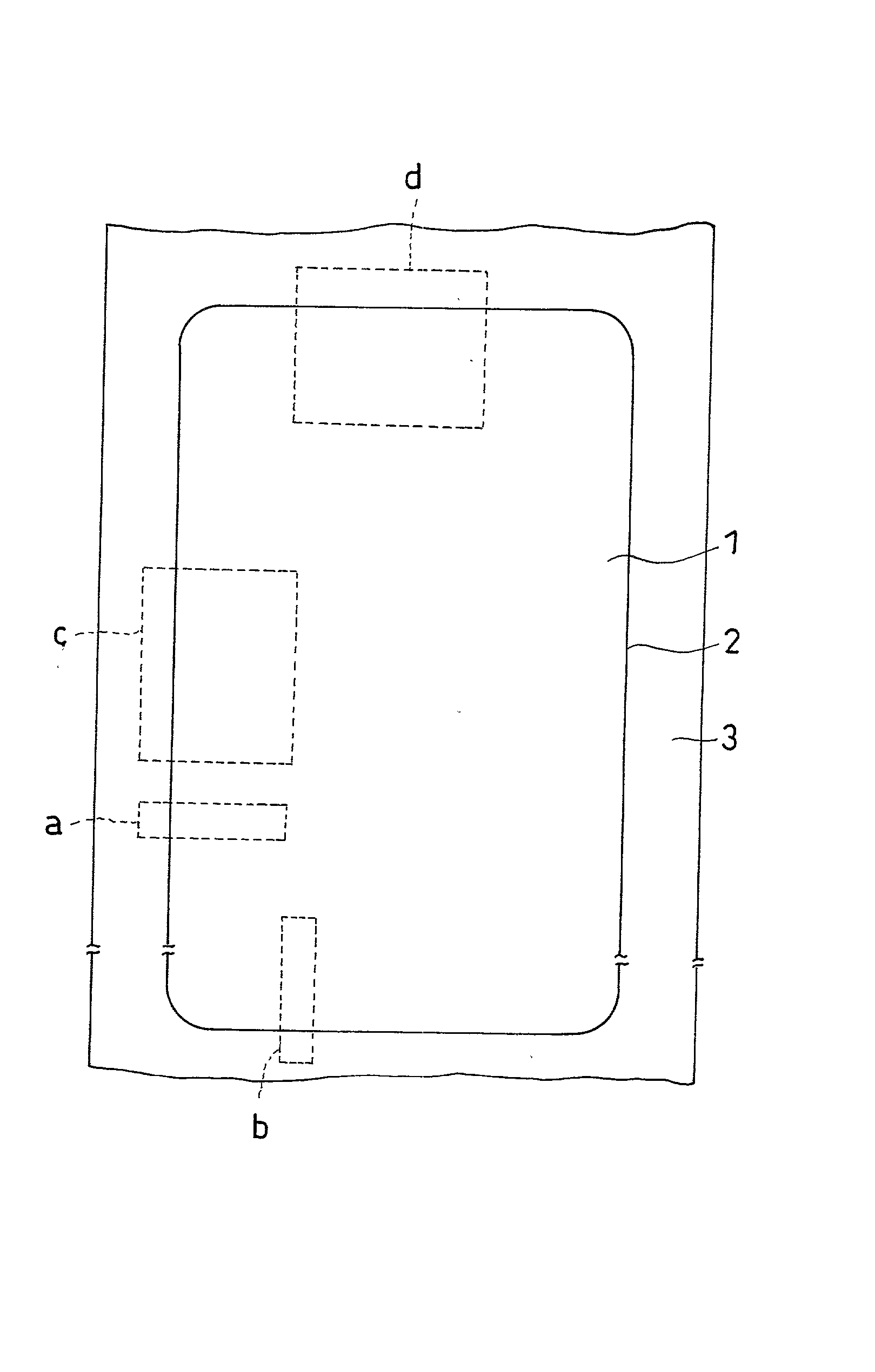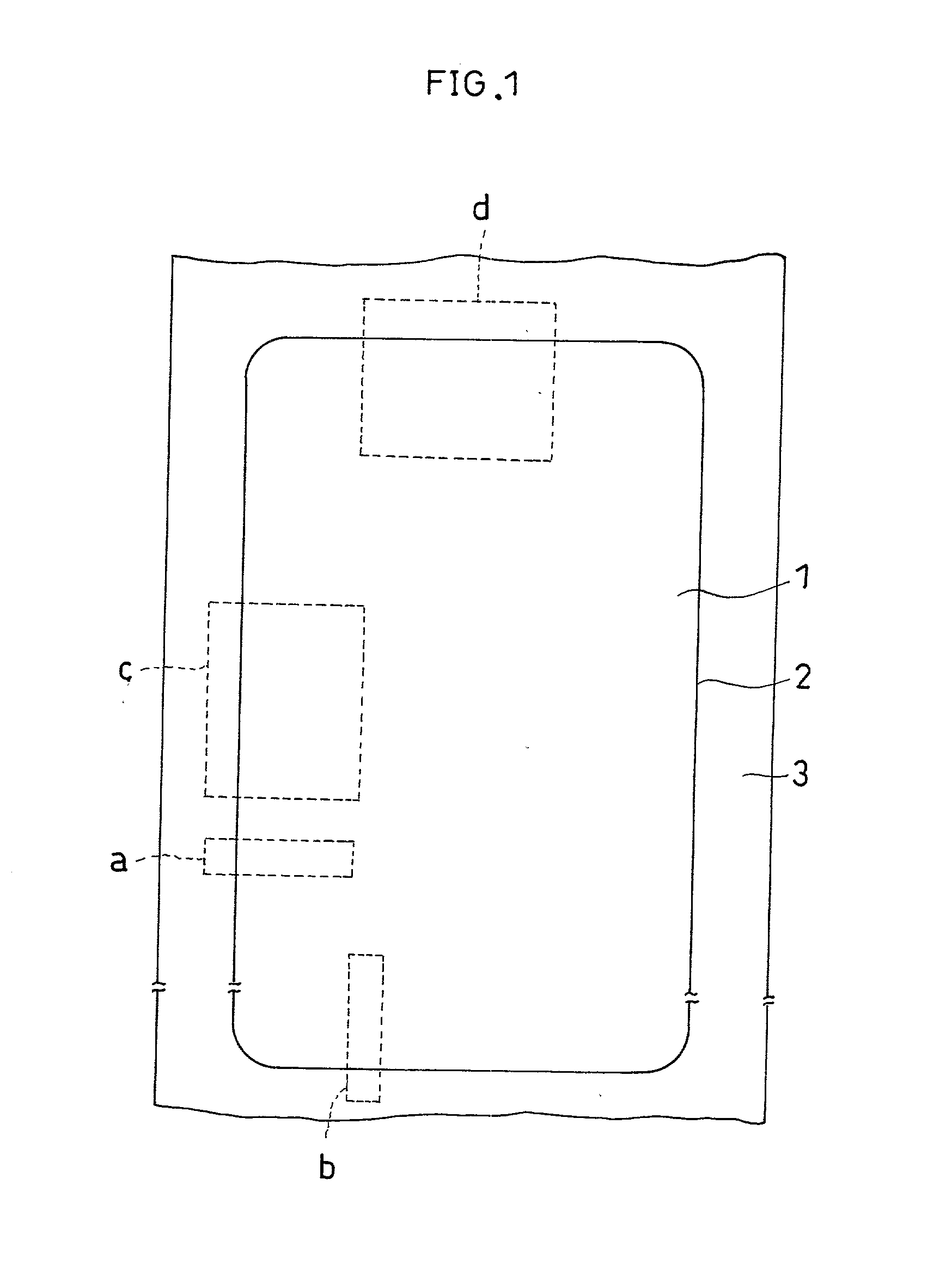Base fabric for hollow-woven air bag and air bag
a base fabric and air bag technology, applied in the field of air bags, can solve the problems of residuals jumping out, air leakage, and inapplicability of sewing products, and achieve the effects of improving weaving performance, low rate of variation in thickness in the width direction of the base fabric, and flat base fabri
- Summary
- Abstract
- Description
- Claims
- Application Information
AI Technical Summary
Benefits of technology
Problems solved by technology
Method used
Image
Examples
example 1
[0088] Nylon 66 filament yarns of 35(D dtex / 108f were used as warps and wefts to form the portion 1 in FIG. 1 by plain weave by employing an air jet loom and an electronic jacquard machine so as to form a double bag portion having 60 warps / 2.54 cm and 60 wefts / 2.54 cm by hollow weave. After that, the resultant woven fabric was subjected to a boiling water shrinking process and, subsequently, drying and setting processes, thereby forming a finished fabric. In the border portion 2 in FIG. 1 of the sample, one line of warps and wefts interlaced in the order opposite to that of the end line of the bag portion (double portion) was inserted. FIG. 4 shows an example of the structure of 3 (fastened portion B) in FIG. 1 at this time.
example 2
[0089] Nylon 66 filament yarns of 350 dtex / 108f were used as warps and wefts to form the portion 1 in FIG. 1 by plain weave by employing an air jet loom and an electronic jacquard machine so as to form a double bag portion having 60 warps / 2.54 cm and 60 wefts / 2.54 cm by hollow weave. After that, the resultant woven fabric was subjected to a boiling water shrinking process and, subsequently, drying and setting processes, thereby forming a finished fabric. In the border portion 2 in FIG. 1 of the sample, one line of warps and wefts interlaced in the order opposite to that of the end line of the fastened portion A was inserted. FIG. 5 shows an example of the structure of 3 (fastened portion B) in FIG. 1 at this time.
example 3
[0090] Nylon 66 filament yarns of 350 dtex / 108f were used as warps and wefts to form the portion 1 in FIG. 1 by plain weave by employing an air jet loom and an electronic jacquard machine so as to form a double bag portion having 60 warps / 2.54 cm and 60 wefts / 2.54 cm by hollow weave. After that, the resultant woven fabric was subjected to a boiling water shrinking process and, subsequently, drying and setting processes, thereby forming a finished fabric. In the border portion 2 in FIG. 1 of the sample, seven lines of warps and wefts interlaced in the order opposite to that of the end line of the fastened portion A were inserted. FIG. 6 shows an example of the structure of 3 (fastened portion B) in FIG. 1 at this time.
PUM
 Login to View More
Login to View More Abstract
Description
Claims
Application Information
 Login to View More
Login to View More - R&D
- Intellectual Property
- Life Sciences
- Materials
- Tech Scout
- Unparalleled Data Quality
- Higher Quality Content
- 60% Fewer Hallucinations
Browse by: Latest US Patents, China's latest patents, Technical Efficacy Thesaurus, Application Domain, Technology Topic, Popular Technical Reports.
© 2025 PatSnap. All rights reserved.Legal|Privacy policy|Modern Slavery Act Transparency Statement|Sitemap|About US| Contact US: help@patsnap.com



